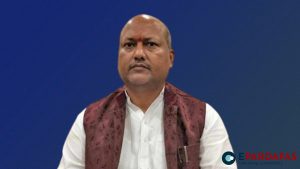
539 Local Levels Fully Electrified Across Nepal, 99% Population Now Has Access to Electricity
A total of 539 out of 753 local levels in Nepal have been fully electrified, with 196 partially illuminated, according to the latest data released by the Nepal Electricity Authority (NEA). However, 18 local levels are still not connected to the national grid, relying instead on electricity generated by micro hydropower projects and solar plants.
The NEA’s 2081 BS electrification data reveals that 99% of Nepal’s population now has access to electricity, based on a comprehensive study that includes data up to the ward level. Currently, there are 5.935 million electricity customers in the country. Of those with access to electricity, 97% are connected through the national grid, while the remaining 2% use alternative sources.
A total of 590 local levels have achieved between 95% to 100% electrification, 72 local levels have reached between 75% to 95%, 33 local levels are at 50% to 75%, 26 local levels have achieved 26% to 50%, and 32 levels are still below 25% electrification.
NEA Managing Director Kulman Ghising emphasized the progress made since the fiscal year 2072-73 BS, when the electrification rate was just 58%. He stated that the NEA is committed to fulfilling the government’s goal of providing reliable and quality electricity to all within the current fiscal year. “We are prioritizing the connection of households in remote areas that still lack electricity, and improving the quality of service in areas already connected,” Ghising added.
Efforts are underway to bring electricity to all households in the mountainous and hilly districts of Karnali and Sudurpaschim provinces within a year. The NEA has already selected contractors and started work on electrification in the hilly regions of Lumbini, Karnali, and Sudurpaschim provinces, using a $220 million soft loan provided by the Asian Infrastructure Investment Bank (AIIB) and the European Investment Bank (EIB).
Across Nepal’s seven provinces, Madhes Province has achieved 100% electrification, followed by Koshi at 99.30%, Bagmati at 99.97%, Gandaki at 99.40%, and Lumbini at 98.49%. Karnali Province has the lowest electrification rate at 74.38%, while Sudurpaschim Province has reached 86.58%.
Out of Nepal’s 77 districts, only Humla remains unconnected to the national grid, with electricity provided through micro-hydel projects and solar energy. Fifty-six districts have achieved 95% to 100% electrification, 10 districts are between 75% to 95%, five districts are between 50% to 75%, and six districts are between 25% to 50%.
In the Koshi Province, all districts except Solukhumbu (89.04%) and Sankhuwasabha (93.99%) have over 95% electrification, with Jhapa, Morang, Sunsari, and Dhankuta districts fully electrified. Similarly, all eight districts of Madhes Province and several districts in Bagmati, Gandaki, Lumbini, and Sudurpaschim provinces have achieved full electrification, though challenges remain in some hilly and remote areas.
In Karnali Province, the highest electrification rate is in Rukum West (95.8%), while Mugu has the lowest at 31.80%. In Sudurpaschim Province, Kanchanpur and Kailali have 100% electrification, while Bajura lags with only 33.51%.
The NEA is also working on extending electricity access to other regions through government investment and by allocating a portion of its earnings to electrification efforts.
- PM Oli Inspects ‘Sagarmatha Sambaad’ Secretariat, Calls for Streamlined Preparations
- Nepal Secures Six-Wicket Victory Over Hong Kong in Women’s T20 Cricket
- CPN-UML to Hold Central Secretariat Meeting on March 17
- Nepal’s Environment Minister Shahi Urges Global Action on Climate Change at UK Roundtable













Comments